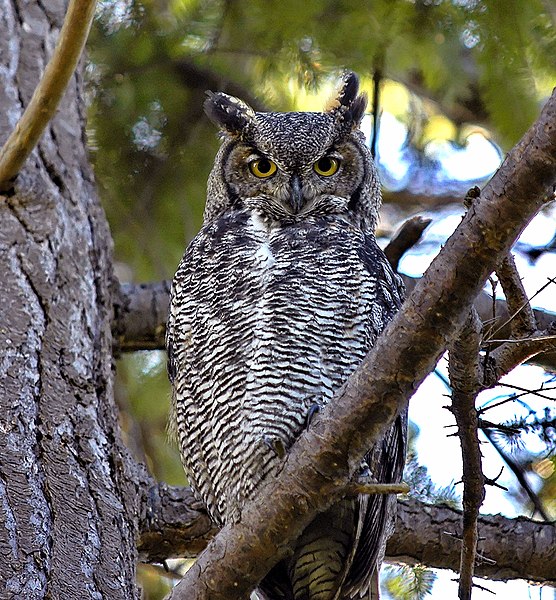If I were in charge of people touring taiga, these are five things I would want people to learn and remember about it:
1. In the summer, the sun doesn't set for weeks.
2. Taiga is the largest land biome, covering 11% of the Earth.
3. Peat bogs are widespread in taiga.
4. Taiga is Russian for forest.
5. Some of the oldest trees in the world are in taiga, such as a 4,600 year old bristlecone pine.
62°16'16.91"N
7°12'27.83"E
Taiga For BSchutts
Wednesday, January 12, 2011
Phosphorus Cycle

The phosphorus cycle is a biogeochemical cycle which details the movement of phosphorus across Earth. Phosphorus is a common element which is essential to all life, as it forms ATP and DNA. While most abundant in the oceans as salt, it can also be found in the soil. This is because rocks in the ocean slowly move to land by geological processes, where they are weathered to become part of soil. In soil, plants absorb it, and it moves up the food chain. When these plants and animals die, it is returned to the soil. Runoff then returns phosphorus to the oceans. Phosphorus is always a solid in normal conditions, so it can not be found in the atmosphere.
58°15'19.32"N
4°10'58.25"W
Tuesday, January 11, 2011
Environmental Damage

Currently, the largest threat to taiga is deforestation. More than half of Canada's boreal forests are owned by logging companies to cut down. The main method of logging in Canada is clearcutting, or the removal of most or all trees in an area. This often leaves barren wastelands where entire ecosystems once were. However, many countries are starting to end this. Canada recently put over 13,000 square kilometers under protection. If more similar precautions were taken, deforestation would be a much lesser issue. If change doesn't occur quickly, boreal forests could all but disappear.
Another problem which taiga faces is global warming.Global warming is caused by the release of greenhouse gases into the atmosphere. The burning of fossil fuels by humans is the largest contributer. In 2007, it was estimated that the average surface temperature increased 1.3 degrees Fahrenheit during the 20'th century. Due to increased temperatures, many species have lost their habitats, especially in tundra. In taiga, global warming can cause forest fires and drunken trees. Recycling paper, plastic and metal makes a huge difference is combating climate change. This also leads to less deforestation. Another way to help is to use less gasoline and electricity. If global warming continues, there may be no polar ice left. This would lead to widespread flooding and countless deaths.
44° 6'36.51"N
142°38'29.55"E
Food Chain

A food chain is a diagram of species in an area. Each level eats the level below it and is eaten by the level above it. At the bottom of the food chain is a producer. These species, usually plants, produce their own food from the sun's energy during photosynthesis. Next is a primary consumer. These are animals which eat plants exclusively. Secondary consumers eat primary consumers. These can be carnivores or omnivores. After these are tertiary consumers, then quaternary and so forth. These can be carnivores, omnivores, or decomposers. As the level becomes higher, the animals become larger but less numerous. When food chains combine to include all animals and plants species eat, a food web is formed.
Below is an example of a food chain which exists in Canada.
Quaternary consumer-great horned owl
Tertiary consumer-weasel
Secondary consumer-bird
Primary consumer-mouse
Producer-shrub
54° 0'15.30"N
77°43'22.27"W
Monday, January 10, 2011
Skunks

Skunks (family name Mephitidae) are a family of mammals which live throughout the Americas, including Canada. To deter predators, they excrete a foul-smelling odor. This is an example of aposematism. Another purpose of the odor is to make predators believe the animal is unpalatable. It also can cause temporary blindness and irritation. This spray is strong enough to ward off almost any predator, such as bears.
46°25'57.15"N
85°45'8.46"W
Snowshoe Hare


The snowshoe hare (Lepus american-
us) is a species of hare found throughout Canada and Alaska. This animal is significant for its fur, which changes color from white in the winter to brown in the summer. This is an example of camouflage, or blending in with the environment to hide. This adaptation was an evolutionary advantage because allowed snowshoe hares to evade predators.
53°21'20.28"N
110°51'45.52"W
Limiting Factors

A limiting factor is a factor that limits the ability for species to thrive. There are two types of limiting factors: density-dependent and density-independent. A density-dependent limiting factor is affected by the density of a population. In thick boreal forest, a density-dependent limiting factor can be light, which often won't reach the ground until a tree falls. Saplings will also have limited space to grow in this scenario.

A density-independent limiting factor is a factor which is unaffected by the size of a population. One such limiting factor througout taiga is temperature. Many species cannot survive the winters which taiga experiences. Cold temperatures will generally afftect small and large populations the same.Another density-independent limiting factor is a volcanic explosion. Plants and animals will be affected the same regardless of their population size.
65°41'6.55"N
150°57'29.18"W
Subscribe to:
Posts (Atom)
